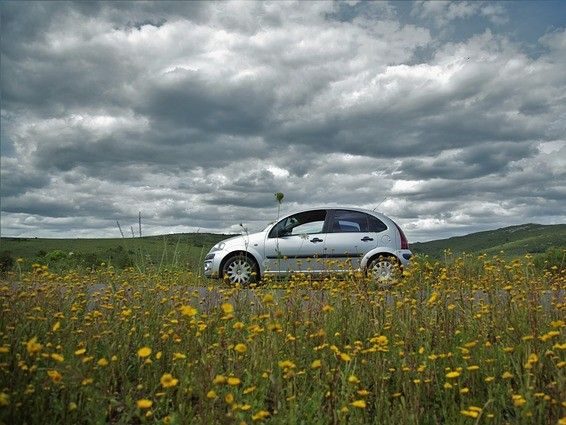Categories more
- Adventures (17)
- Arts / Collectables (15)
- Automotive (37)
- Aviation (11)
- Bath, Body, & Health (77)
- Children (6)
- Cigars / Spirits (32)
- Cuisine (16)
- Design/Architecture (22)
- Electronics (13)
- Entertainment (4)
- Event Planning (5)
- Fashion (46)
- Finance (9)
- Gifts / Misc (6)
- Home Decor (45)
- Jewelry (41)
- Pets (3)
- Philanthropy (1)
- Real Estate (16)
- Services (23)
- Sports / Golf (14)
- Vacation / Travel (60)
- Watches / Pens (15)
- Wines / Vines (24)
- Yachting / Boating (17)
Knowing French Roadway Regulations to Travel Via Car Rental (Hyrbil) in Nice
Published
01/12/2022Taking a road trip to Nice exposes a motorist to France in all her glory with the vibrant cities and breathtaking countryside as you travel. The destination is among the most popular for a holiday road trip. Still, if that is your intention, you must research before the journey to learn the laws of the French roadways to avoid running into any problems or having unexpected delays due to non-compliance or, worse, an accident.
Since Nice will be your final destination, you'll probably pick a car hire in another location instead of getting a bilhyra i Nice (car rental in Nice) and want to return it to the original site to avoid added fees. That allows an enjoyable leisurely drive to your final location with the option of stopping if you so choose.
Let us dive into the wide range of regulations a motorist needs to be mindful of and comply with on the French roadways.
What Are the French Roadway Regulations for Travelers Road Tripping to Nice?
Many people worldwide choose France as a holiday travel spot. The vibrant country has so much to offer culturally, historically, and socially. Nice is a county that a lot of people single out as the preferred final destination choosing to road trip through the French countryside as they make their way there.
To do that, you need to be familiar with the country's roadway regulations, traffic patterns, and various signs to help you stay in flow with the other cars and avoid potential accidents. Learn about car travel in France at https://traveltips.usatoday.com/car-travel-france-17305.html. Some regulations motorists need to pay attention to include:
- Alcohol: Anyone with less than three years of driving experience, either driving or riding in a car, needs to maintain an alcohol limit per liter less than 0.2 grams. If you have experience exceeding three years, the limit rises to 0.5 grams. Still, these limits are decidedly less than 0.8 grams established by Welsh, English, and Northern Irish regions.
- Stickers: Motorists must carry a "Crit'Air sticker" when traveling through specific cities on the vehicle. There are rigid fines charged at the stop when a car is found not to have one.
- License: Travelers to the country need to be 18 or above with a valid, permanent driver's license to drive legally. You need to be over the age of 16 to operate a motorcycle (125cc) or moped. EU and EEA-issued driving licenses are accepted. (IDP) or international driving permits are not required, but they are recognized.
- Safety: Certain items are required to carry inside vehicles for safety purposes.
- Reflective Jackets: Each car needs to have a reflective jacket for all the people riding in the vehicle, and they need to be in arms' reach.
- Warning Triangle: Vehicles that have four or more wheels need to have these.
- Deflectors: The type of vehicle you have will determine whether you need to manually adjust the beams or use deflector stickers.
- Breathalyzer: This is not enforced, nor are penalties imposed, but the government prefers drivers carry a breathalyzer for alcohol testing.
- Bulbs: Again, not mandatory, but the suggestion is that motorists carry bulb kits for their cars.
- Snow chains: If you visit during winter, snow chains are compulsory in some areas designated by signs making it wise to keep these in your vehicle. Many car hire agencies provide these on their cars.
Things not allowed to take into the country:
- Dairy or milk products
- Meat or anything that contains meat
The following needs to be inspected and receive a "phytosanitary certificate:"
- Fresh fruits with the exceptions of dates, durians, coconuts, pineapples, bananas
- Plant products
- Vegetables
- plants
● Overtaking and passing
The overall role is to drive on the right, with the left lane being used for overtaking. The exception is when the roadways are busy with traffic, a car can use the right to overtake vehicles going slower than the set speed. When on a steep gradient, moving aside for those maneuvering uphill is required.
A tram can be overtaken while in motion but only on the right unless it is a one-way street, and then the left lane is permissible if there's little room on the right.
● Priority of motorists
When approaching an intersection, anyone on the right has the priority unless there are indications to the contrary. When entering a roundabout, the vehicles already there need to follow through before another driver interjects. Emergency vehicles with sirens and flashing lights should always be given priority.
● Horns for warnings
When giving warnings to other motorists, horns can be used if necessary. Flashing passing lights is the method for alerts during the house ranging from sunset to sunrise, with the horn being saved for imperative situations during this timeframe.
In built-up areas, horn use is prohibited unless there is imminent danger. Any type of siren, multi-tone sound, or whistling horn is strictly prohibited.
● Seat belts
For vehicles fitted with adequate seat belts, these are a requirement for those riding in the car and the driver. The driver has the ultimate responsibility to ensure that anyone 18 years of age and under has their belts fastened securely. There are stringent fines for not being restrained in belts in France.
● Traffic signals
France abides by the international three-color traffic signals with the exception there is no amber color after the red light. Motorists will see a flashing amber light letting them know to heed caution, slow their speed, or move through the intersection with priority to those on the right.
Flashing red lights tell motorists there is to be no entry. These are also indicative of an emergency vehicle exit or a level crossing. When the solid red light changes into a yellow arrow, drivers are permitted to follow the direction of the arrow but must give way to motorists heading that way and pedestrians.
Final Thought
These are merely a few of the laws. There are stringent fines and penalties for not following the regulations, as cited in France. For major offenses against the law, including driving without insurance or adequate licensure or driving under the influence of alcohol, it is possible to have your vehicle confiscated.
When taking a road trip to Nice using a rental car, it is vital to have all the sufficient paperwork in line, a valid license, the necessary insurance, and follow the regulations explicitly. No one wants their hired vehicle confiscated by the government because they neglected to pay attention to the details.
The speed laws can be a bit complex if you do not take the time to try to decipher them. They can differ based on the weather, visibility, and type of vehicle you have. Again, exceeding speeds can result in your car being impounded by the French government.
A road trip to Nice can be an exciting experience in your rental car. The priority, regardless of the country you are coming from, is to respect the rules of the French roads. Click here for guidelines on driving as an American in France. The French government has provisions in place for motorists' protection. Strict regulations mean you can return your hired vehicle in pristine condition since everyone is driving cautiously.

















